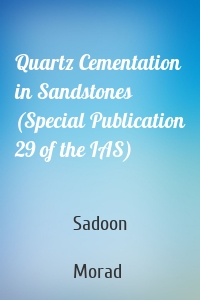Sadoon Morad
3 кн.
Quartz Cementation in Sandstones (S...
Quartz is the major porosity-reducing cement in many sandstone sequences. Therefore, Quartz cements represent a key source of petrographic and geochemical information about diagenetic history. They are also the major determinant of sandstone reservoir quality. While the ultimate goal of research in this area is to make robust predictions about the amount and distribution of quartz cements in a wide variety of depositional and burial settings, there are nevertheless large areas of the subject...
| Автор | Sadoon Morad |
Carbonate Cementation in Sandstones
Carbonate cements are very common and abundant in clastic sequences. They profoundly influence the quality of hydrocarbon reservoirs and supply important information on palaeoenvironments and the chemical composition and flow patterns of fluids in sedimentary basins. Despite this importance, their distribution patterns in time and space and their geochemical evolution are not yet deeply explored and elucidated. This Special Publication contains 21 review papers and case studies on carbonate...
| Автор | Sadoon Morad |
Clay Mineral Cements in Sandstones...
Clay minerals are one of the most important groups of minerals that destroy permeability in sandstones. However, they also react with drilling and completion fluids and induce fines migration during hydrocarbon production. They are a very complex family of minerals that are routinely intergrown with each other, contain a wide range of solid solutions and form by a variety of processes under a wide range temperatures and rock and fluid compositions. In this volume, clay minerals in sandstones are...
| Автор | Sadoon Morad |




